Key takeaways:
- The Palestinian Conference serves as a vital platform for sharing personal stories, fostering unity, and promoting discussions on urgent issues surrounding human rights and social justice.
- Youth voices are transformative, bringing fresh perspectives that challenge the status quo, inspire creativity, and bridge generational gaps.
- Effective audience engagement relies on understanding emotions, sharing personal experiences, and using storytelling to create memorable connections.
- Preparation and feedback are crucial for growth as a speaker, while workshops aimed at empowering youth can drive transformative change in the community.
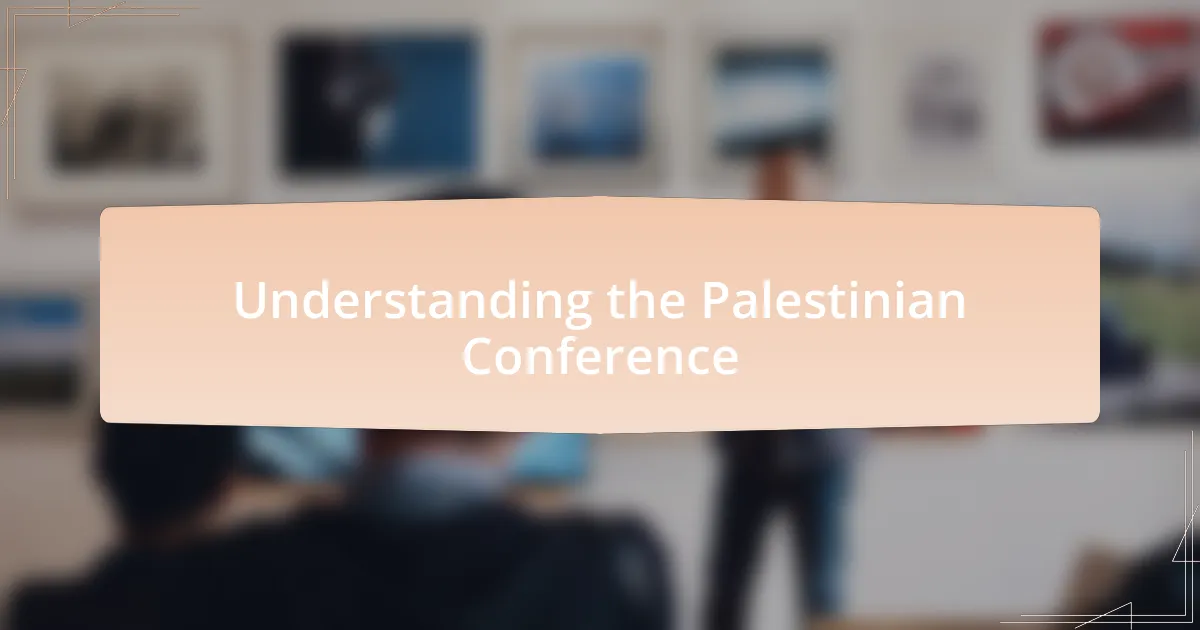
Understanding the Palestinian Conference
The Palestinian Conference serves as a crucial platform for discussion and dialogue among diverse voices advocating for Palestinian rights. I still remember attending my first session, feeling a surge of hope as activists shared their stories and experiences. It struck me how these personal narratives added depth to the political discourse, transforming abstract ideas into heartfelt realities.
Each session at the conference is more than just an event; it’s a gathering of passion and resilience. I recall a young speaker standing before us, conveying their journey and challenges in a way that left a lasting impact. Isn’t it fascinating how these shared experiences can inspire unity among people from different walks of life? The conference fosters this spirit of collaboration and empathy.
Moreover, the discussions often delve into urgent issues such as human rights and social justice. I have witnessed the power of these dialogues to spark change, both within individuals and communities. Isn’t this what we need more of in today’s world? The Palestinian Conference embodies not only a call to action but also a reminder of our shared humanity.

Importance of Youth Voices
The voices of youth are not only vital; they are transformative. I often think back to the vibrant discussions I had with peers at the Palestinian Conference. Witnessing young speakers challenge the status quo, I realized how their energy and perspective can ignite passion in others and drive important conversations forward.
There’s something special about the authenticity that youth bring to the table. I remember hearing a young advocate talk about their personal experiences with displacement. It was as if we were all transported into their reality. This raw honesty can bridge gaps between generations and inspire older activists to view old challenges through a fresh lens.
Youth voices contribute to a dynamic narrative that is crucial for any movement. They remind us that change is not just possible but inevitable if we nurture it. Have you ever felt that spark of hope when a young person shares their vision for the future? I know I have, and it’s a poignant reminder that the passion for justice and equality thrives across all ages.
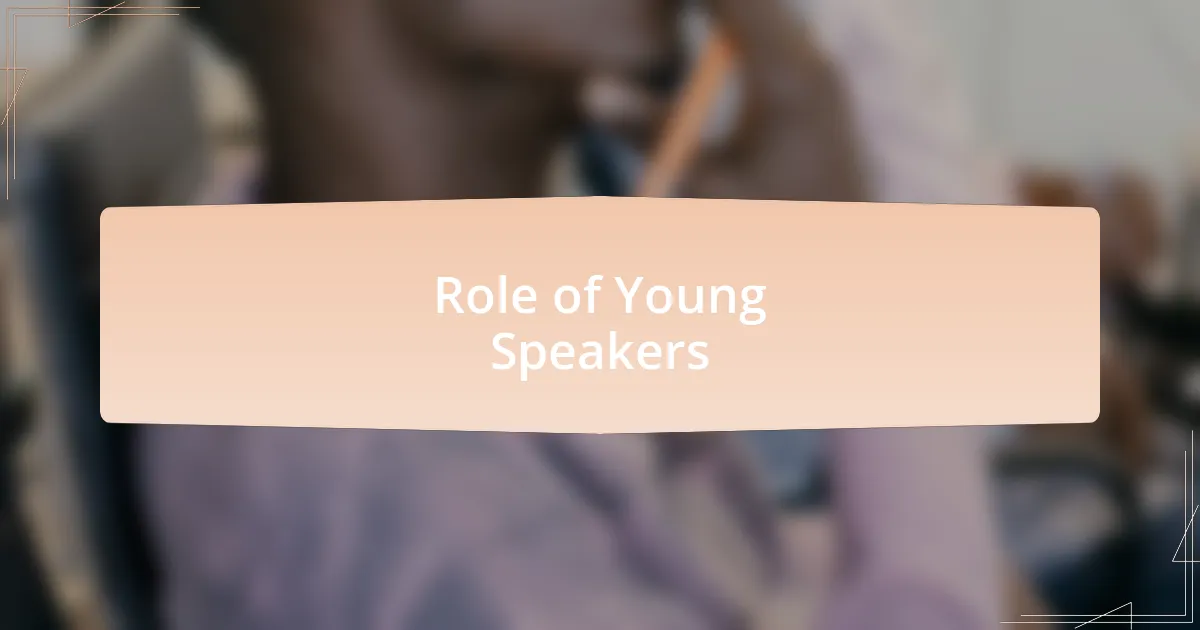
Role of Young Speakers
The role of young speakers is multifaceted and incredibly impactful. When I witnessed a peer articulate their thoughts on the Palestinian identity, it was more than just words; it was a moment of connection. Their viewpoint resonated deeply, capturing the struggles and triumphs of our community in a way that struck a chord with every listener. Isn’t it fascinating how a fresh voice can refresh discussions that feel stagnant?
Young speakers often challenge existing narratives, pushing boundaries that older generations may hesitate to cross. I remember during a panel discussion when one young speaker proposed innovative solutions to long-standing issues. Their boldness wasn’t just inspiring; it motivated others to think creatively about change. How often do we get the chance to see the world through a new lens that revitalizes hope?
Moreover, young speakers act as bridges between generations. They weave together the wisdom of the past with the urgency of the present. I’ve seen how older activists nod in appreciation as youth delve into complex issues while offering fresh solutions. This interaction not only fosters dialogue but also cultivates a sense of shared purpose. Wouldn’t more communities thrive if we actively listened to our youth?
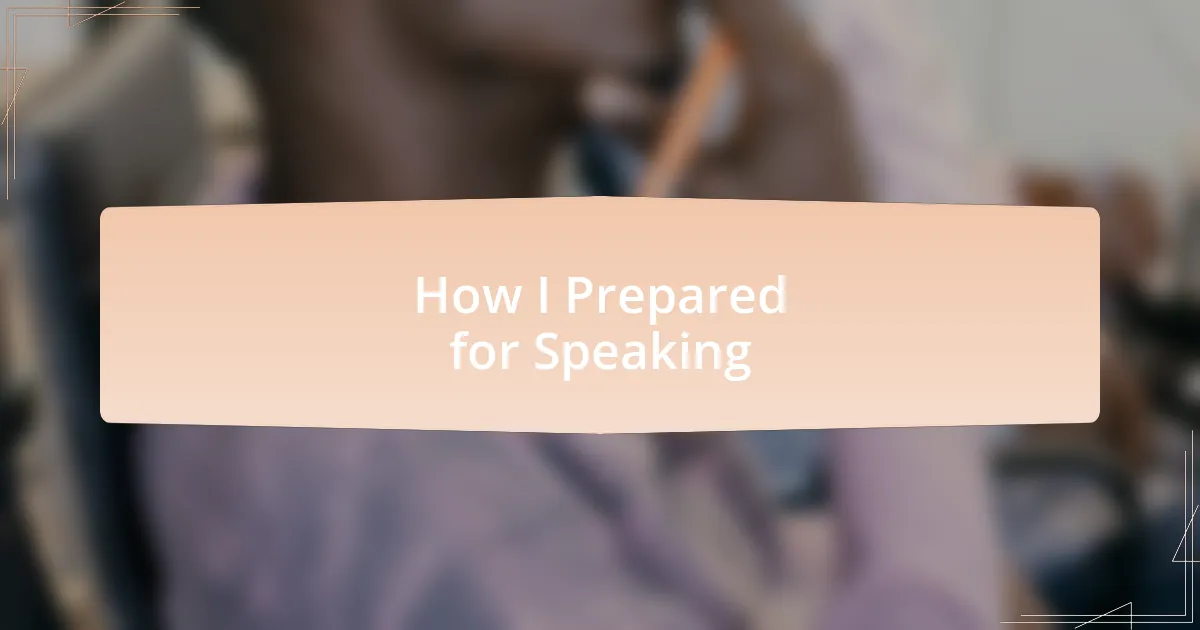
How I Prepared for Speaking
Preparing to speak was an intense journey for me. I dedicated countless hours to researching the historical context of the Palestinian experience, which deepened my understanding and connection to the topic. I remember pacing in my room, reciting my speech out loud, feeling the weight of every word as if they carried the hopes and dreams of my community.
I also focused on connecting with my audience. Visualizing their faces helped me determine which stories would resonate most deeply. One evening, as I practiced in front of a mirror, I recalled a moment when a family member shared their struggles. It made me realize that sharing personal experiences not only humanizes complex issues but also invites empathy and connection. Have you ever felt that surge of raw emotion while sharing your story? It’s transformative.
On the day of the event, I made sure to calm my nerves by practicing mindfulness techniques. I took deep breaths, reflecting on the purpose behind my message. The energy in the room was palpable as I looked into the eyes of my listeners, and I felt a wave of confidence wash over me. In that moment, I truly understood the power of preparation—not just in terms of words, but in ensuring I was emotionally present and ready to engage with everyone.
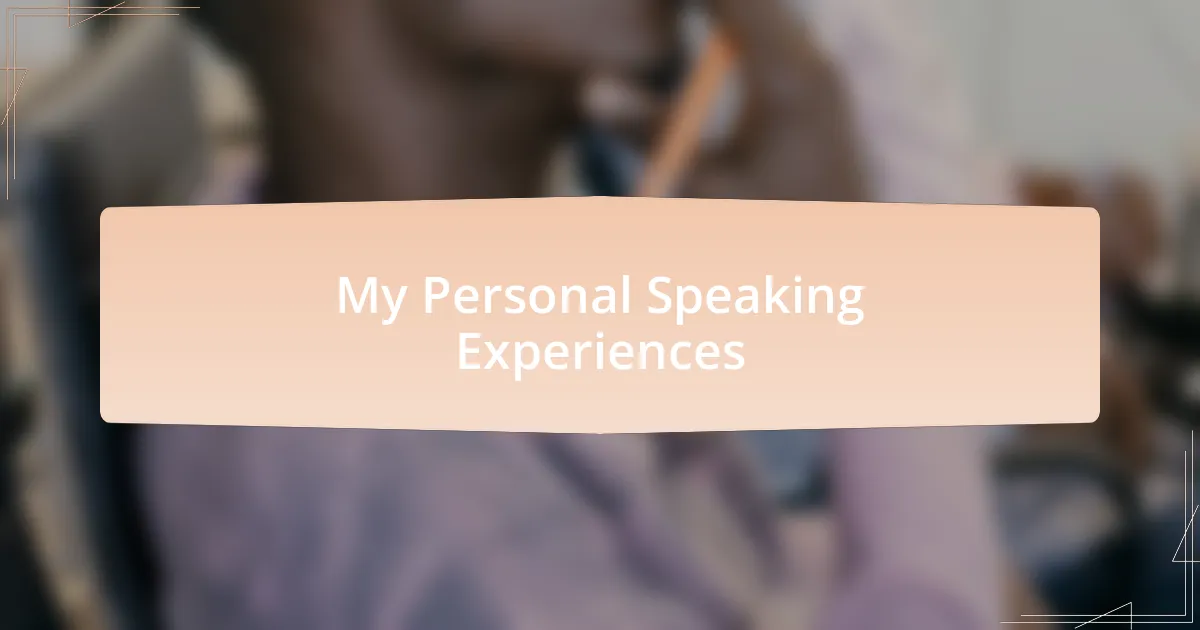
My Personal Speaking Experiences
Standing on that stage for the first time was a whirlwind of emotions. I could feel my heart racing, and as I looked out at the audience, I couldn’t shake the sense of responsibility I felt. I recalled a moment back in school when a teacher had said that speaking is about sharing your truth. That thought echoed in my mind while I spoke about my experiences, giving me strength and grounding me in my vulnerability.
In one of my talks, I shared a story about a close friend who had faced immense challenges due to the political climate. As I described her determination and resilience, I noticed tears in the eyes of some audience members. That instant made me realize how interconnected our stories are, and it deepened my desire to amplify voices that often go unheard. Have you ever discussed an issue so personal that it felt like you were lifting a weight off your shoulders? That’s how I felt—empowered to share more.
Each experience I’ve had on stage has taught me something new about the art of speaking. I remember one particular event when I stumbled over my words, which initially felt like a disaster. But, embracing that moment opened up a genuine interaction with the audience, as we all shared a laugh. It taught me that authenticity often shines through imperfection, and in those moments, real connections begin to form. Isn’t it fascinating how our flaws can sometimes create the strongest bond with others?

Engaging the Audience Effectively
Engaging the audience effectively starts with understanding their emotions. I recall a moment during a presentation when I made eye contact with a young woman in the front row. Her expression reflected a mix of curiosity and empathy, which encouraged me to adapt my tone and dive deeper into my topic. Have you ever felt a shift in energy when someone in the crowd seems genuinely interested? That connection turned my speech from a monologue into a conversation.
Another time, I decided to open up about my struggles with public speaking itself. As I shared my nerves and fears, I saw heads nodding and heard soft laughter of recognition in the audience. This vulnerable approach made everyone feel like we were all in this together. It’s intriguing how sharing a personal challenge can create a safe space and foster a sense of community. As speakers, aren’t we all looking for that moment of shared understanding?
Additionally, using storytelling as a tool has proven to be a game-changer for me. During a recent talk, I painted a vivid picture of a local festival, describing the colors, sounds, and tastes. The audience was transported into the scene, and I could see their imaginations light up. Engaging the senses not only captivates attention but also builds a memorable experience. Isn’t it remarkable how powerful a shared story can be in galvanizing a group of people around a common theme?
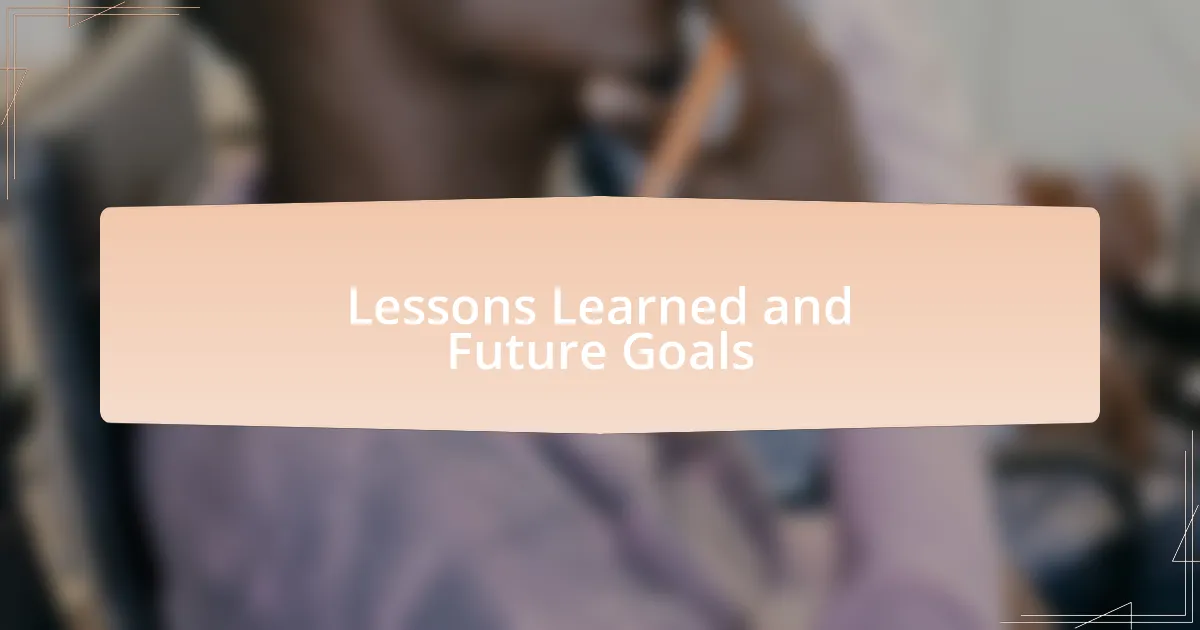
Lessons Learned and Future Goals
Reflecting on my experience, one of the most profound lessons I’ve learned is the importance of preparation. There was a time when I underestimated the value of knowing my material inside out. The nerves I felt during my first speech were amplified by a lack of confidence in my knowledge. Now, I approach each presentation like a dialogue with the audience, ensuring I’m well-prepared and can handle unexpected questions. Have you ever found that being prepared transforms your anxiety into excitement?
Another key takeaway for me has been the power of feedback. After one of my early talks, a mentor approached me and expressed how some of my points resonated strongly, while others fell flat. It was humbling yet invaluable, as it shaped how I approach my future topics. I think many young speakers often underestimate the role of constructive criticism. How can we truly grow if we don’t embrace honest feedback from those we’ve touched?
Looking ahead, my goal is to expand my outreach as a speaker, particularly with youth in my community. I envision workshops that empower young voices to share their stories, providing them with the tools I wish I had early on. When I think about the potential impact these workshops could have, I feel a surge of determination. Could nurturing the next generation of speakers lead to transformative change in our society? I believe it can, and I’m excited to be a part of that journey.